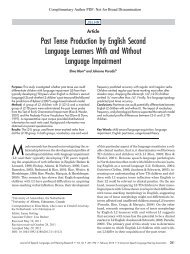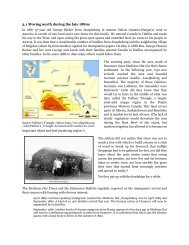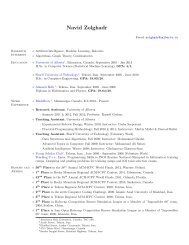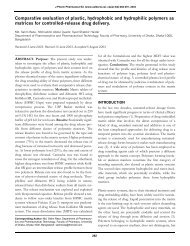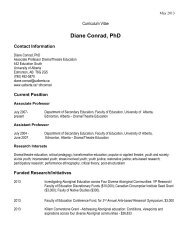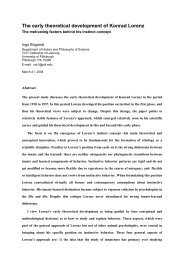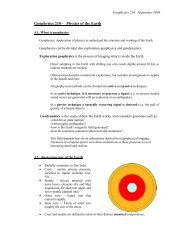Processing of Primary Fischer-Tropsch Products - University of Alberta
Processing of Primary Fischer-Tropsch Products - University of Alberta
Processing of Primary Fischer-Tropsch Products - University of Alberta
You also want an ePaper? Increase the reach of your titles
YUMPU automatically turns print PDFs into web optimized ePapers that Google loves.
FT naphthas have the added benefit <strong>of</strong> having sulphur contents below 1 ppm.<br />
Their inclusion in blends should assist refiners in meeting low sulphur content<br />
specifications.<br />
7.3 Other applications for LTFT products<br />
The applications for products derived from LTFT Syncrude are the same as<br />
those <strong>of</strong> most crude oils. However, due to its ultralow sulphur content, all FT-<br />
based products will need less processing to meet strict environmental<br />
specifications.<br />
The low sulphur content and highly paraffinic nature <strong>of</strong> the FT derived<br />
products make them ideal candidates for fuel cell applications [88]. In this case,<br />
their low aromatic and naphthenic contents become an additional advantage that<br />
results in extremely low carbon deposition in the reforming catalysts.<br />
High-octane naphthas could be obtained from FT syncrude after adequate<br />
processing. Although this is technically attainable, there are better and more<br />
cost-effective petroleum processes for this purpose.<br />
The possible use <strong>of</strong> the LTFT wax as rocket propellant is another<br />
interesting option [89].<br />
8. LARGE SCALE PRODUCTION OF HIGH VALUE LTFT PRODUCTS<br />
Most <strong>of</strong> the recent interest for future LTFT GTL plants has been for the use <strong>of</strong><br />
supported cobalt catalyst in slurry phase reactors. There are good reasons for this<br />
approach not least <strong>of</strong> which is the relative simplicity <strong>of</strong> the process that lends<br />
itself to successful application at remote locations. Work is in progress to<br />
construct plants at Ras Laffan, Qatar and Escravos, Nigeria. This concept uses<br />
the Sasol Slurry Phase Distillate TM (Sasol SPD TM) process or the Shell Middle<br />
Distillate Synthesis (SMDS TM) process to produce mainly diesel fuel with by-<br />
product naphtha.<br />
Although these processes are ideally suited for the production <strong>of</strong> diesel,<br />
Sasol and Shell have recognized the opportunity to produce chemicals in a<br />
synergistic manner.<br />
There was a time when it was thought that future large scale GTL plants<br />
will not be able to target higher value hydrocarbon products due to limitations<br />
imposed by the size <strong>of</strong> the markets. For exan~le, Shell stated in 1995 that their<br />
future SMDS projects will be based on transportation fuels only [81, 82].<br />
However, for at least three important products namely ethylene, propylene and<br />
lubricant base oils (also known as waxy raffinate), the markets are large enough<br />
to sustain large scale co-production <strong>of</strong> these products. In the recently announced<br />
Shell plant in Qatar, that is eventually expected to produce about 140 000 bbl/d<br />
527




